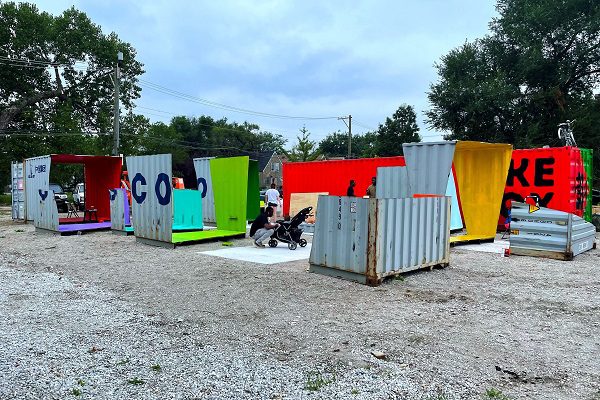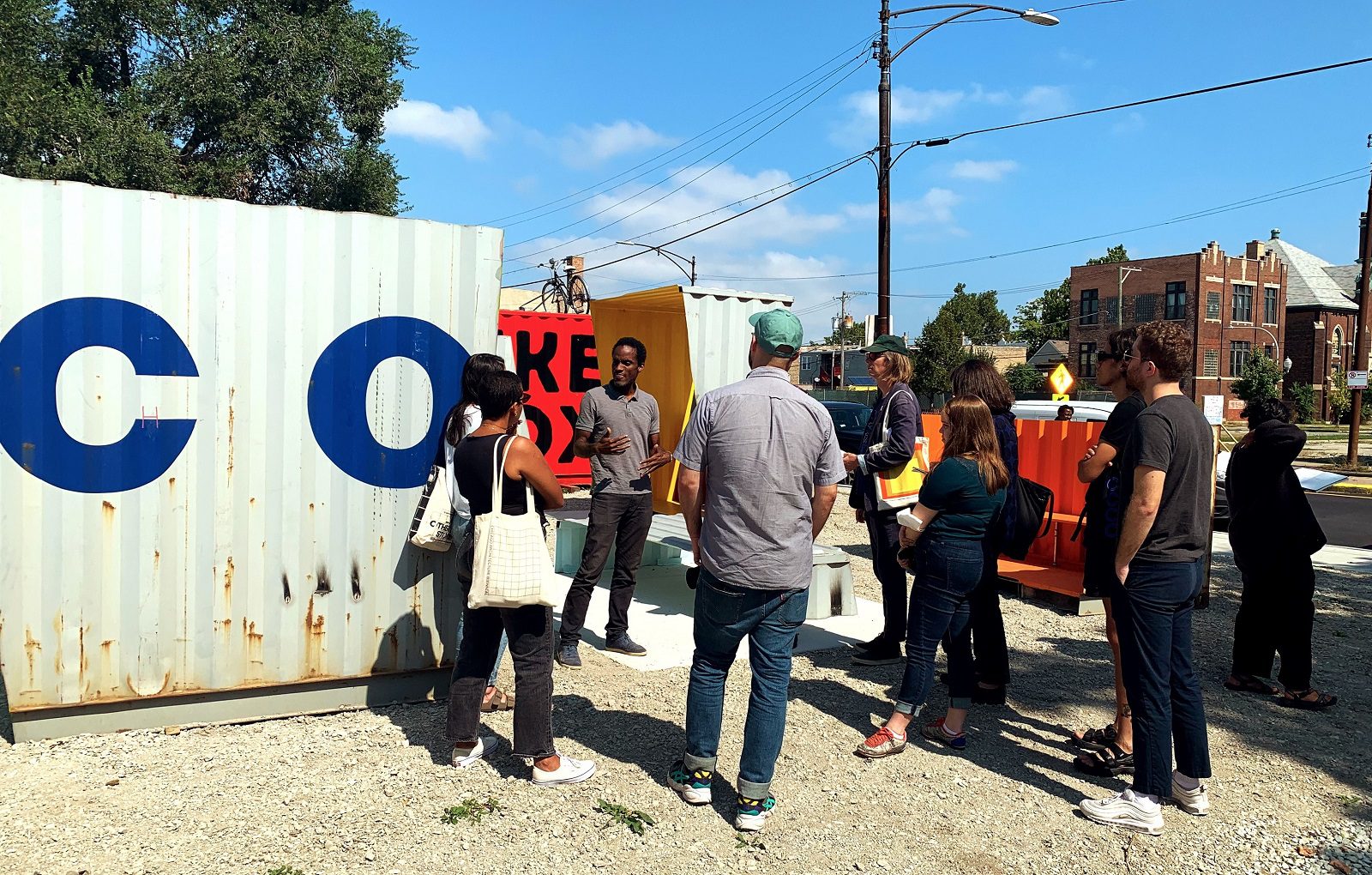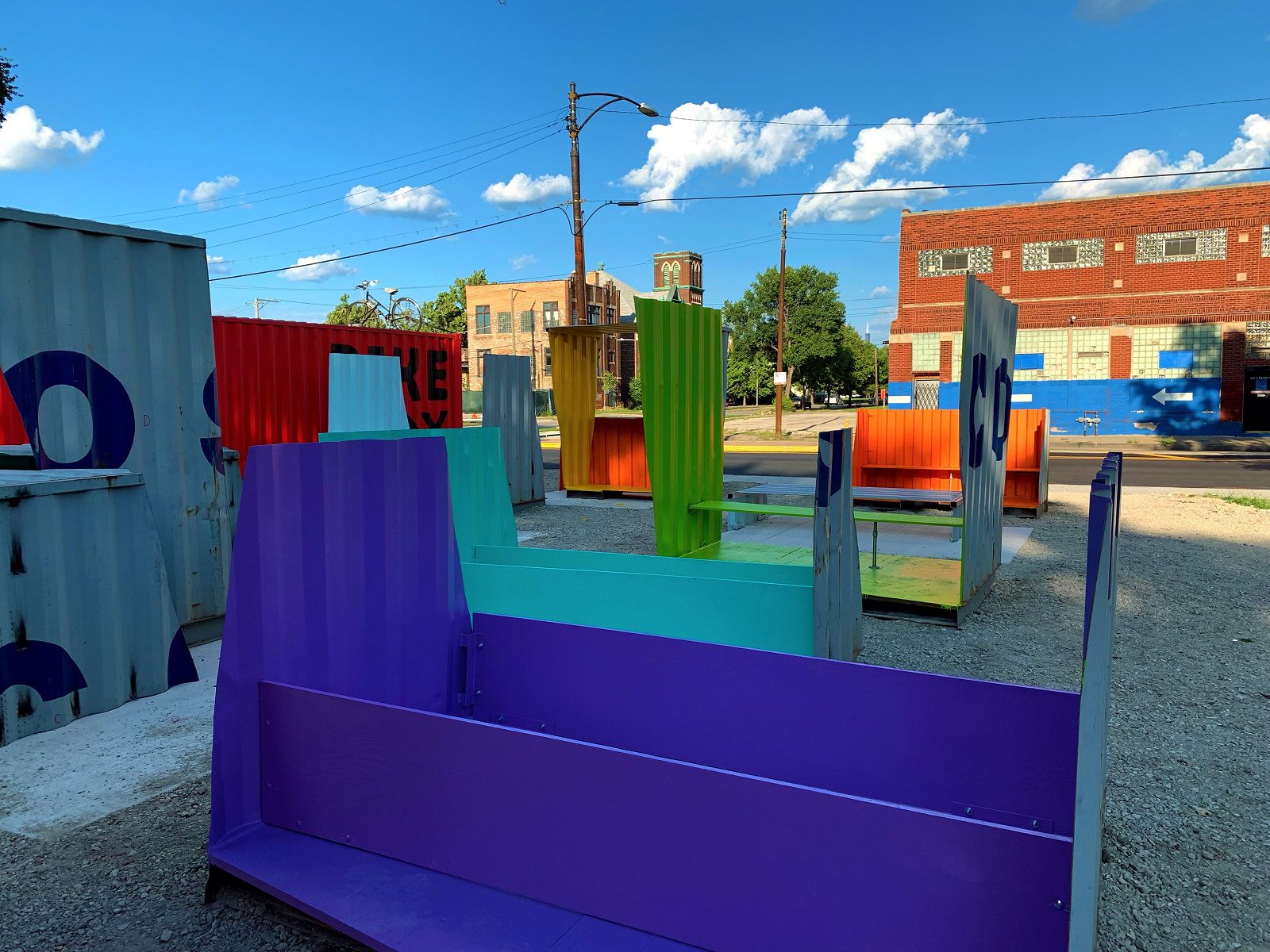Chicago Architecture Biennial Includes Professor’s Work

Master of Urban Design Director Sekou Cooke has designed and built an installation for the 2021 Chicago Architecture Biennial (CAB), the largest international survey of contemporary architecture in North America. Founded in 2015 and now in its fourth edition, the 2021 CAB takes place September 17-December 18 and is organized around the theme of The Available City. Participating designers have worked with local community groups to develop ideas for vacant urban spaces throughout Chicago.
Cooke’s installation is a pavilion in the North Lawndale area of Chicago designed and built in collaboration with Young Men’s Educational Network (YMEN), a non-profit organization that serves young Black men in the North Lawndale community, preparing them for leadership “by helping them grow in their faith and character, develop a love for learning, and use their talents to serve the community and strengthen our families.” The installation, constructed from parts of a 40-foot shipping container, sits in a vacant lot on South Pulaski Road. Cooke was assisted in the design process by Heather Warren, a design associate at sekou cooke studio, and recent architecture alumna Makenzie Elam. The pavilion was built by a team that included community members and youth organized by YMEN.

Sekou Cooke, center, talking to a group on the site of “Grids + Griots.”
Cooke has named the work “Grids + Griots,” a concept explored in his recent book, Hip-Hop Architecture.
“An important tool for engaging younger residents is the transfer of oral traditions and histories from generation to generation,” Cooke writes in the project description. “The griot––a storyteller, entertainer, and occasional healer––is an important character in many West African cultures. “In the book Hip-Hop Architecture, the chapter ‘Grids + Griots’ contrasts the image and attitude of the griot with that of Modernist and Postmodernist architectural practice. This tension between the grid and the griot is the central driving force for the pavilion designed for YMEN.”

Much like the creation of hip-hop music, Cooke’s design “repurposes existing materials, chops them up, and remixes them into a new composition able to be recomposed as needed,” Cooke adds. “The container elements break free from the gridded pavement to determine their own freeform rhythm.”